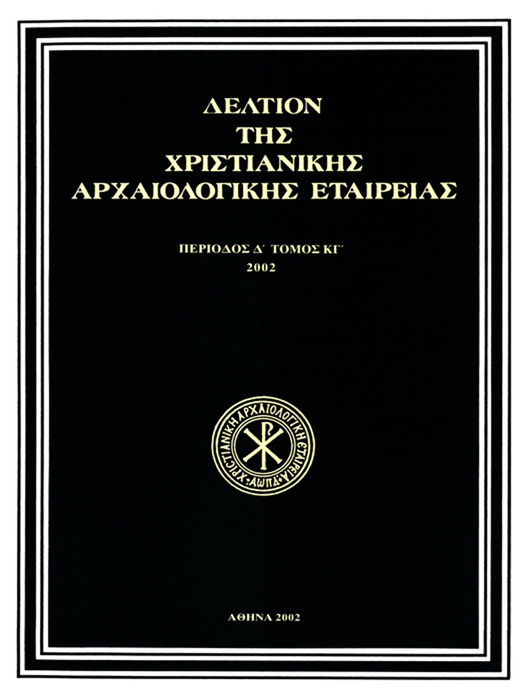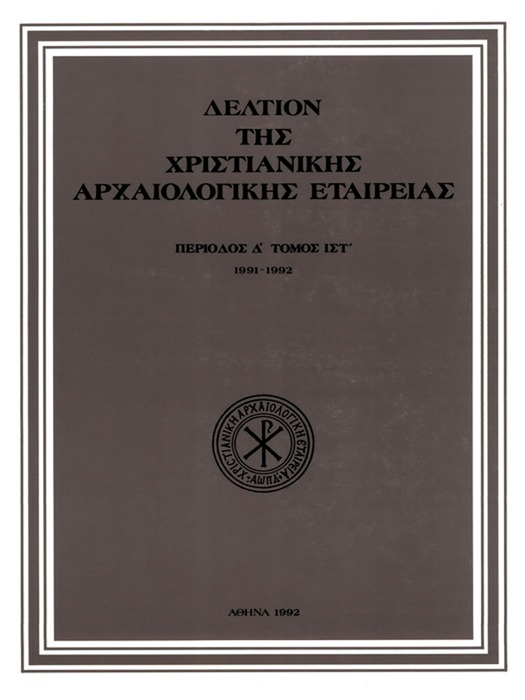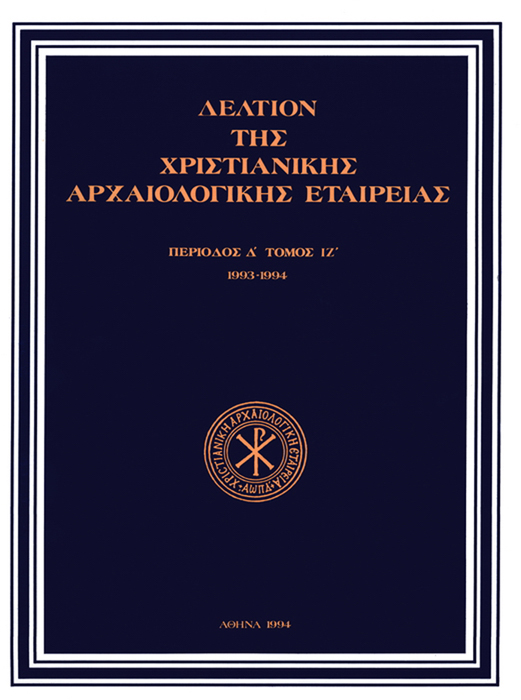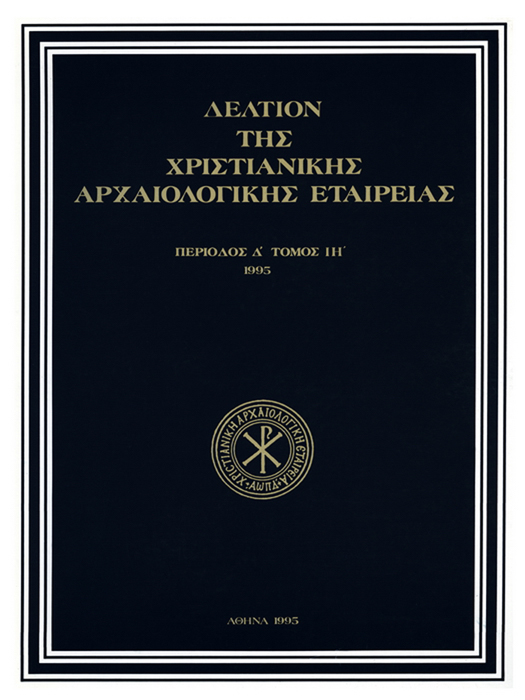Byzantine depiction of the Good Shepherd
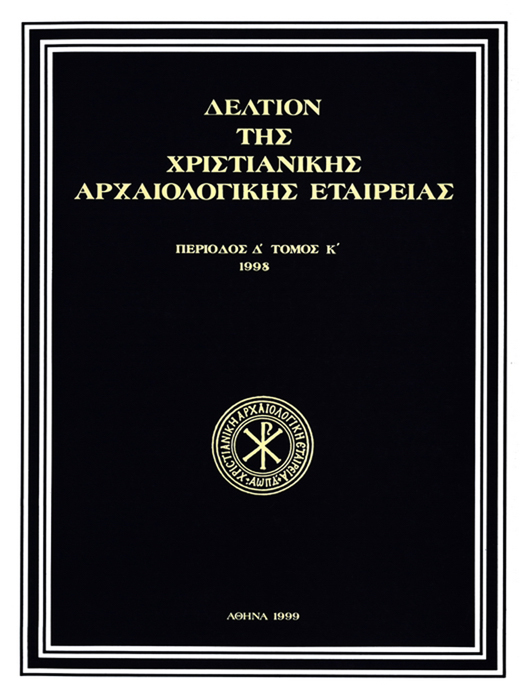
Abstract
In the collection of the Byzantine and Christian Museum of Athens a marble doorpost is decorated with a representation of the Good Shepherd in relief. Vegetal motifs, a dog and a banded knot surround and complement the image of the Good Shepherd. The iconographic analysis of the slab suggests that the latter is purely Byzantine in concept and execution. The special motif of the banded knot is a magical element with protective connotations, which adds a superstitious character and quality to the marble member. The doorpost according to its stylistic and technical features can be dated in the end of the 13th century.
Article Details
- How to Cite
-
ΣΚΛΑΒΟΥ-ΜΑΥΡΟΕΙΔΗ Μ. (1999). Byzantine depiction of the Good Shepherd. Deltion of the Christian Archaeological Society, 20, 81–86. https://doi.org/10.12681/dchae.1195
- Section
- Articles
The copyright for articles in the journal Deltion of the Christian Archaeological Society (henceforth Deltion) is retained by the author(s), with first publication rights granted to the journal and to EIE/ EKT the right to store and communicate these articles to the public via its information infrastructures. By virtue of their appearance in this journal, articles are free to use with proper attribution for non-commercial uses under a ShareAlike obligation. The Christian Archaeological Society and EIE/EKT retain the worldwide right to reproduce, display, distribute, and use articles published in the Deltion in all formats and media, either separately or as part of collective works for the full term of copyright. This includes but is not limited to the right to publish articles in an issue of the Journal, copy and distribute individual reprints of the articles, authorize reproduction of articles in their entirety in another publication of the Christian Archaeological Society, and authorize reproduction and distribution of articles or abstracts thereof by means of computerized retrieval systems.




